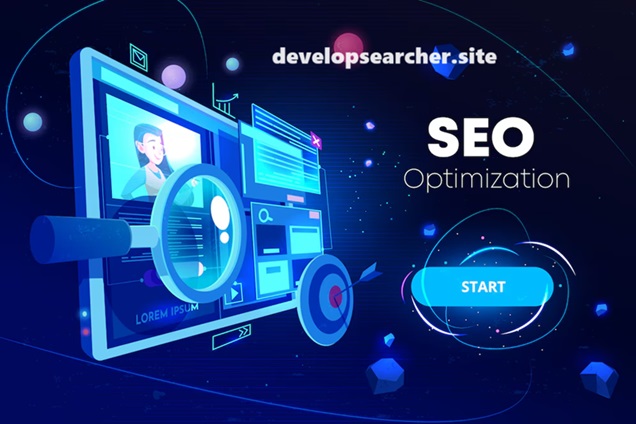The landscape of Search Engine Optimization (SEO), staying ahead of the curve is crucial for ensuring your website ranks highly on Google. As search algorithms become more sophisticated, the strategies for optimizing your site must adapt and evolve. This comprehensive guide will equip you with the knowledge and tools needed to outrank your competition and achieve top rankings in 2024.
Understanding the Fundamentals of SEO
To master SEO, it’s essential to understand its core components. SEO involves optimizing your website to improve its visibility on search engines like Google. The primary elements include:
- Keyword Research: Identifying the terms and phrases your target audience uses to search for your products or services.
- On-Page SEO: Optimizing individual web pages to rank higher and earn more relevant traffic.
- Off-Page SEO: Enhancing your site’s authority and reputation through backlinks and social signals.
- Technical SEO: Ensuring your website meets the technical requirements of search engines for crawling and indexing.
- Content Creation: Producing high-quality, valuable content that satisfies user intent.
Conducting Effective Keyword Research
Keyword research is the foundation of any successful SEO strategy. It involves discovering the search terms your audience uses and understanding their search intent. Use tools like Google Keyword Planner, Ahrefs, and SEMrush to identify high-volume, low-competition keywords. Focus on long-tail keywords, which are more specific and less competitive.
Identifying Search Intent
Understanding search intent is crucial for selecting the right keywords. There are four primary types of search intent:
- Informational: Users are looking for information or answers to questions.
- Navigational: Users are trying to find a specific website or page.
- Transactional: Users intend to make a purchase or complete a transaction.
- Commercial Investigation: Users are researching products or services before making a decision.
By aligning your content with the appropriate search intent, you can better meet the needs of your audience and improve your rankings.
Mastering On-Page SEO
On-Page SEO involves optimizing various elements on your website to enhance its search engine visibility. Key components include:
Optimizing Title Tags and Meta Descriptions
Title tags and meta descriptions are critical for both search engines and users. Ensure your title tags are unique, contain your primary keyword, and are within 50-60 characters. Meta descriptions should be compelling, include relevant keywords, and stay within 150-160 characters.
Using Header Tags Effectively
Header tags (H1, H2, H3, etc.) help structure your content and make it easier for search engines to understand. Use H1 for the main title and H2-H6 for subheadings. Incorporate keywords naturally into these headers to improve relevance.
Creating High-Quality, Engaging Content
Content is king in the world of SEO. Focus on creating high-quality, engaging content that provides value to your audience. Use a mix of text, images, videos, and infographics to keep users engaged. Ensure your content is well-researched, informative, and free of grammatical errors.
Optimizing Images and Multimedia
Images and multimedia elements can enhance the user experience, but they need to be optimized for SEO. Use descriptive file names, include alt text with relevant keywords, and compress images to improve load times.
Enhancing User Experience and Site Performance
Google prioritizes websites that offer a superior user experience (UX) and perform well. Focus on the following aspects:
Improving Site Speed
Site speed is a crucial ranking factor. Use tools like Google PageSpeed Insights to identify and fix issues that slow down your site. Optimize images, leverage browser caching, and minimize JavaScript and CSS files to boost performance.
Ensuring Mobile-Friendliness
With the majority of searches now conducted on mobile devices, having a mobile-friendly website is essential. Use responsive design techniques to ensure your site looks and functions well on all devices. Test your site with Google’s Mobile-Friendly Test tool to identify and resolve any issues.
Enhancing Navigation and Site Structure
A well-organized site structure helps search engines crawl and index your site more effectively. Use clear, descriptive URLs and create an intuitive navigation menu. Implement internal linking to guide users to related content and improve the overall user experience.
Building a Robust Off-Page SEO Strategy
Off-Page SEO involves activities outside your website that impact your rankings. The primary focus is on building high-quality backlinks from reputable sources.
Acquiring High-Quality Backlinks
Backlinks are a significant ranking factor. Aim to acquire high-quality backlinks from authoritative websites in your niche. Use tactics such as guest blogging, creating shareable content, and reaching out to influencers to build your backlink profile.
Leveraging Social Media
Social media signals can indirectly influence your SEO efforts. Share your content on social media platforms to increase its visibility and encourage others to link to it. Engage with your audience and build a strong social media presence to enhance your online reputation.
Implementing Advanced Technical SEO
Technical SEO ensures your website meets the technical requirements of search engines. Key areas to focus on include:
Improving Crawlability and Indexability
Ensure search engines can easily crawl and index your site. Create and submit a sitemap to Google Search Console, use robots.txt to control crawling, and fix any broken links or errors.
Implementing Structured Data
Structured data helps search engines understand your content better and can improve your visibility in search results. Use schema markup to provide additional information about your content, such as product details, reviews, and FAQs.
Enhancing Website Security
Website security is essential for both user trust and SEO. Implement HTTPS to encrypt data and protect user information. Regularly update your software and plugins to prevent security vulnerabilities.
Monitoring and Analyzing Your SEO Performance
To ensure your SEO efforts are effective, it’s crucial to monitor and analyze your performance regularly. Use tools like Google Analytics and Google Search Console to track your rankings, traffic, and user behavior. Identify areas for improvement and adjust your strategy accordingly.
Tracking Key Metrics
Focus on key metrics such as organic traffic, bounce rate, conversion rate, and keyword rankings. Regularly review these metrics to gauge the effectiveness of your SEO strategy.
Conducting Regular SEO Audits
Perform regular SEO audits to identify and fix any issues that could hinder your performance. Use tools like Ahrefs, SEMrush, and Screaming Frog to conduct comprehensive audits and ensure your site is optimized for search engines.
Conclusion
Achieving top rankings on Google requires a comprehensive and dynamic approach to SEO. By focusing on keyword research, on-page and off-page optimization, technical SEO, and continuous monitoring, you can enhance your website’s visibility and drive more organic traffic. Stay updated with the latest SEO trends and algorithm changes to maintain your competitive edge in 2024.
To effectively compete with developsearcher.site, it’s crucial to implement these strategies meticulously. Regularly updating your content, optimizing for user experience, and building authoritative backlinks will help you stay ahead of the competition.


